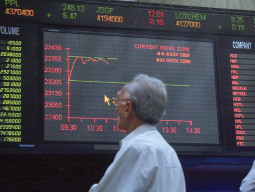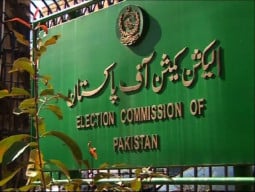
KARACHI: Few sectors of the economy were more profitable than banking for the most part of the 2000s. With improved regulatory framework and a general rise in consumer banking, banks’ earnings grew and stocks went through the roof before the financial meltdown finally hit them in 2008.
While the economy may be in better shape now with a booming stock market, the profitability of large Pakistani banks continues to be unimpressive. In 2012, the latest financial year for which all banks have published their accounts, the profit-before-tax of the six largest Pakistani banks with over Rs500 billion in assets increased by just 5%.
The reasons were obvious. On the one hand, the State Bank of Pakistan (SBP) decreased the discount rate by 300 basis points since January 2012, and on the other it increased the minimum savings rate to 6% while changing its calculation method on the basis of average, rather than minimum, balances.
The squeeze has resulted in a sharp decline in banking spreads – the difference between mark-up earned on advances and the return paid out on deposits. The average spread of large banks in 2012 was 6.9% compared to 7.9% in 2011.

So is the banking sector going to make a comeback anytime soon? Banking industry experts believe it depends in large part on whether the central bank is willing to increase the discount rate in its next monetary policy announcement due in the first week of August.
Based on the expectation of a downward revision of monetary policy rate and a reduction of 100 basis points in the minimum savings rate, seven banking stocks -- namely United Bank, Bank Al Habib, Bank Islami, Bank Alfalah, National Bank, Habib Bank and MCB Bank – have already posted a return of 39% since January, outperforming the KSE-100 Index, according to Elixir Securities.
However, banking sector analysts are not unanimously convinced about a hike in the discount rate. While media reports suggest that an increase of 150 basis points is inevitable for Pakistan’s re-entry into the International Monetary Fund (IMF) programme, most analysts believe otherwise.
According to Furqan Punjani of BMA Capital, the status quo will be maintained in the next monetary policy statement at least because of a host of factors, particularly under-control inflation figures.
Similarly, Elixir Securities also holds that an increase in the interest rate is unlikely in the near term. “We’re bearish on banks. Banks’ earnings are likely to fall 16% year-on-year in calendar year 2013,” Ujala Adnan of Elixir Securities wrote in a recent research note, while referring to the seven commercial banks covered by the Karachi-based brokerage house.
But aren’t banks the main engines of growth without which expansion in any economy is hard to imagine? According to Next Capital CEO Najam Ali, if economic growth is to take place in Pakistan in the next five years, it will inevitably be through banks even if their spreads don’t improve. In fact, Ali believes the banking sector will lead the projected rise in the KSE-110 Index in coming months.
But how is it even remotely possible if the earnings of seven banks covered by Elixir Securities are expected to decline 16% in 2013?
Perhaps the expected rise in the prices of banking stocks that Ali has referred to will come from medium-size banks. Remember, five out of the seven banks that Elixir Securities has on its radar fall in the category of large banks, whose profit-before-tax increased by a meagre 5% in 2012.
On the contrary, the medium-size banks that have from Rs101 billion to Rs499 billion in assets – namely, Bank Al Habib, Standard Chartered Bank, Askari Bank, Bank of Punjab, Faysal Bank, Habib Metro Bank, Meezan Bank, NIB Bank, Soneri Bank and Summit Bank – actually managed to increase their profit-before-tax by as much as 41% in 2012.
Interestingly, many of these banks, like Faysal Bank and Habib Metro Bank, continue to trade on the KSE below their book values.
In conclusion, while earnings’ growth may have stalled as far as large banks are concerned, medium-size banks are likely to stage a comeback on the stock market regardless of any change in the discount rate.
Published in The Express Tribune, August 5th, 2013.
Like Business on Facebook, follow @TribuneBiz on Twitter to stay informed and join in the conversation.

































































COMMENTS
Comments are moderated and generally will be posted if they are on-topic and not abusive.
For more information, please see our Comments FAQ